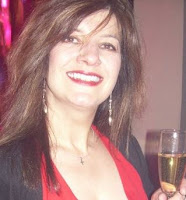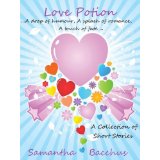Last week was the final post in my editing series. I would like to say a big thank you to guests Sandra Mackness, Sue McDonagh, Susanna Bavin, Samantha Bacchus and Judith Barrow for their very varied and insightful posts. From the number of readings, comments, tweets and retweets it generated, I hope you agree that it was definitely a series worth running. Thank you all for your interest and support.
This week, I'm taking a break from editing...on the blog, that is. I've spent time working on my novel and have submitted a couple of short stories on the writing front. No, I'd like to share with you a very special book I received as a present from my daughter, Jo. The book by J.J. Abrams and Doug Dorst is unusual in its format in that it's presented as a story within a story. It is composed of a novel, 'Ship of Theseus', by a fictional author named V. M. Straka and hand-written notes which fill the book's margins. The notes form a dialogue between two college students both searching the identity of the author and the novel's secret. Hidden within the pages of the novel are supplementary materials such as post cards, photographs, maps, news paper extracts and a telegram and these add to the intrigue.

The 'blurb' describes it as 'One book. Two readers. A world of mystery, menace and desire. A young woman picks up a book left behind by a stranger. Inside it are his margin notes, which reveal a reader entranced by the story and by its mysterious author. She responds with notes of her own, leaving the book for a stranger, and so begins an unlikely conversation that plunges them both into the unknown.'
 The book looks authentic with its own page stamped with dates of its borrowing history. There's even a warning for borrowers to 'KEEP THIS BOOK CLEAN'. 'Anyone finding the book pencil-marked, mutilated or unwarrantably defaced are expected to report it to the librarian.' Of course, this is not an old book, defaced with notes and scribbles but an author's experiment. As Mark Lawson in The Guardian explains, 'Abrams has come up with a novel of such structural daring that the first task of the audience is to work out a way of reading it.'
The book looks authentic with its own page stamped with dates of its borrowing history. There's even a warning for borrowers to 'KEEP THIS BOOK CLEAN'. 'Anyone finding the book pencil-marked, mutilated or unwarrantably defaced are expected to report it to the librarian.' Of course, this is not an old book, defaced with notes and scribbles but an author's experiment. As Mark Lawson in The Guardian explains, 'Abrams has come up with a novel of such structural daring that the first task of the audience is to work out a way of reading it.' The book itself is beautiful. Physically, it can be admired as an old looking book but it is so much more than that. The attention to detail is amazing. I haven't read the novel or the story developing between the readers, Jen and Eric, yet but already I can see that the two stories are of equal importance. So there's my dilemma, as Mark Lawson predicted. Do I read the fictional story first and try and ignore the notes in the margin? Being a people person, I'm tempted to follow the couple's story, examine the artefacts and satisfy my curiosity before I read the novel. However, the reviews suggest that it's best to read the novel with its multi-layers and puzzles first. I'll let you know when I decide.
Have you read a novel with an unusual structure? Perhaps you've read this one?
Have you been given an unusual book as a gift? I'd love you to leave a comment. Thanks. :-)
Thank you for reading.
You may also follow me on Twitter @JanBayLit and on Jan Baynham Writer Facebook page.

















